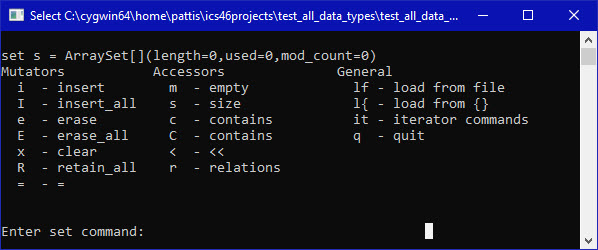
- #Fusesoc cygwin tutorial license key#
- #Fusesoc cygwin tutorial install#
- #Fusesoc cygwin tutorial code#
- #Fusesoc cygwin tutorial download#
Then you just fire up a browser, connect to port 8181 and you are in a versio of cloud9 IDE that is running in the container (virtual machine) with a terminal window that has everything setup to make a bit file inside the container.
#Fusesoc cygwin tutorial download#
Docker does all the rest, it will download the virtual machine (called images in docker) and then run it in a container and bind the port 8181 from the container (think virtual machine) to your local machine port 8181.
#Fusesoc cygwin tutorial install#
Just do a "apt-get install docker.io" and then the docker run command that I posted earlier. If you are already on Linux its super easy to get up and running. If I remember correctly you only have to download 4GB or something like that for this setup. With Docker we can setup a VM that does not require the OS and has the benefit of a centralized repository and compresses the download. If I had done this with virtualbox then I would have to include the OS inside virtualbox, we would easily be pushing a 30GB download really quick. It has everything pre-installed and configured to build bit files for the papilio board. Xilinx ISE, fusesoc, zpuino toolchain, a local version of cloud9, and could also include your bonfire toolchain and the arduino toolchain. Think of it as a lightweight virtual machine, it has all the tools needed pre-installed but without the need to include the OS.


I put this together because the number one complaint that people had in the back to basics thread was frustration with downloading and installing the tools and setting up the environment. Ultimately though, if Xilinx will not allow this type of use case then I will be migrating Papilio boards away from Xilinx and to other vendors that do allow it. When you invoke it, it will download all project source files, synthesize on your local machine, and upload the results back to the cloud server. I'm thinking to develop an "agent" that will run on your workstation and that will be called from the cloud instance. Maybe they will shut it down at some point, but I have a backup plan. I figured that if they were doing this then they must realize the benefits of this type of approach for their customers. I started down this path because I noticed that Xilinx has released an Amazon AMI (virtual machine) that has Vivado pre-installed and direct people to run the licensing tool after they start the AMI.
#Fusesoc cygwin tutorial license key#
I think it looks straightforward to get a graphical wave viewer supported too for simulations.Īnother question: Are you sure that Xilinx has no problem with providing a Docker image with ISE installed? Is releasing it without a license key "enough"?
#Fusesoc cygwin tutorial code#
But, it looks like it uses the same standard as the VS Code so we can pull those modules into Eclipse Che and have nice support for not only VHDL/Verilog, but also code snippets, templates, and builders/wizards for ZPUino and Bonfire. The IDE is not as slick as the cloud9 IDE and there is no default support for VHDL and Verilog files. Then if a user wants to be local there is a docker command they can give to pull their workspace down locally. (fuseSOC is not working correctly in this example but gives the idea of how easy this is for an end user.) Eclipse Che is hosted as a cloud service at Codenvy.io and I was able to create what is called a Factory which is just a URL that people click on and it will automatically start up the docker environment, any example projects we want, and the eclipse che IDE. I was looking at other options and Eclipse Che might be easier for end users. I'm not sure, one of the downsides that I'm worried about is that maybe docker is too complicated for some people. Running with root means that using the image will clutter the users home directory (which is mapped to /workspace as volume) with lot of files owned by root.Have you build your image with a Dockerfile or "interactivly" with docker commit? The only "drawback" I see with the current image, is that it runs only as root (I have tried the -user option of docker, but than it does not work correctly). I think I will also add ghdl to it, than I'm finished. I tried out the docker image and extended it with a "bonfire version":Īdded the lua 5.1 and some lua libs to it (is required for the eLua build system)


 0 kommentar(er)
0 kommentar(er)
